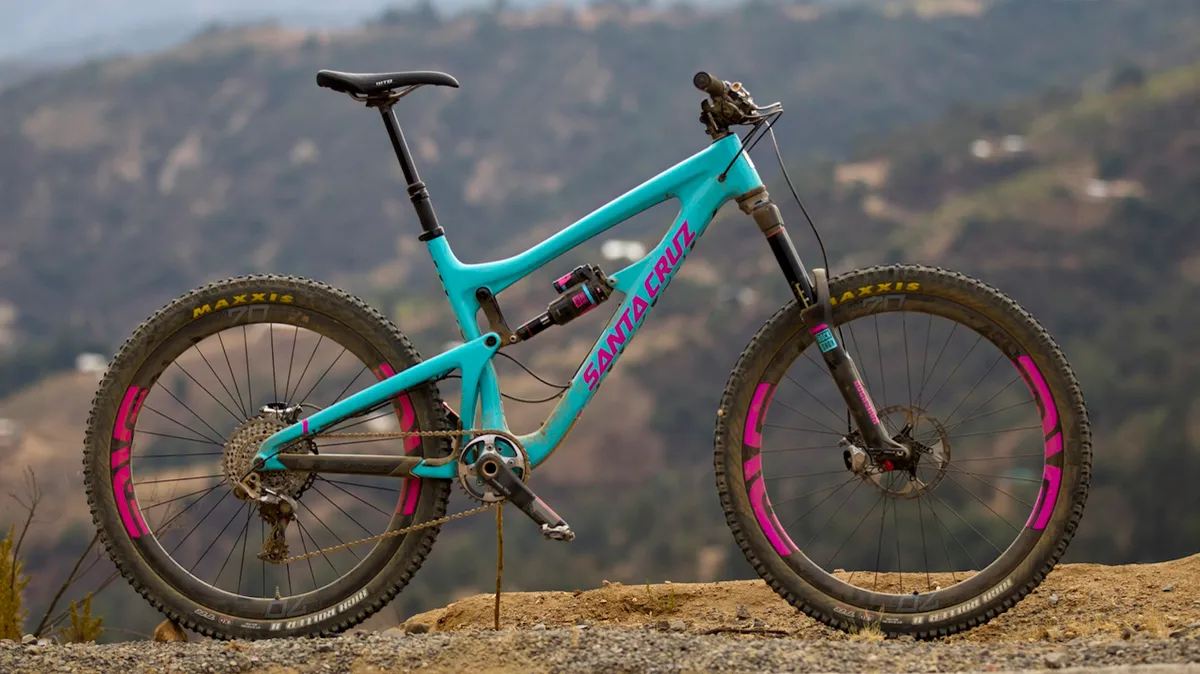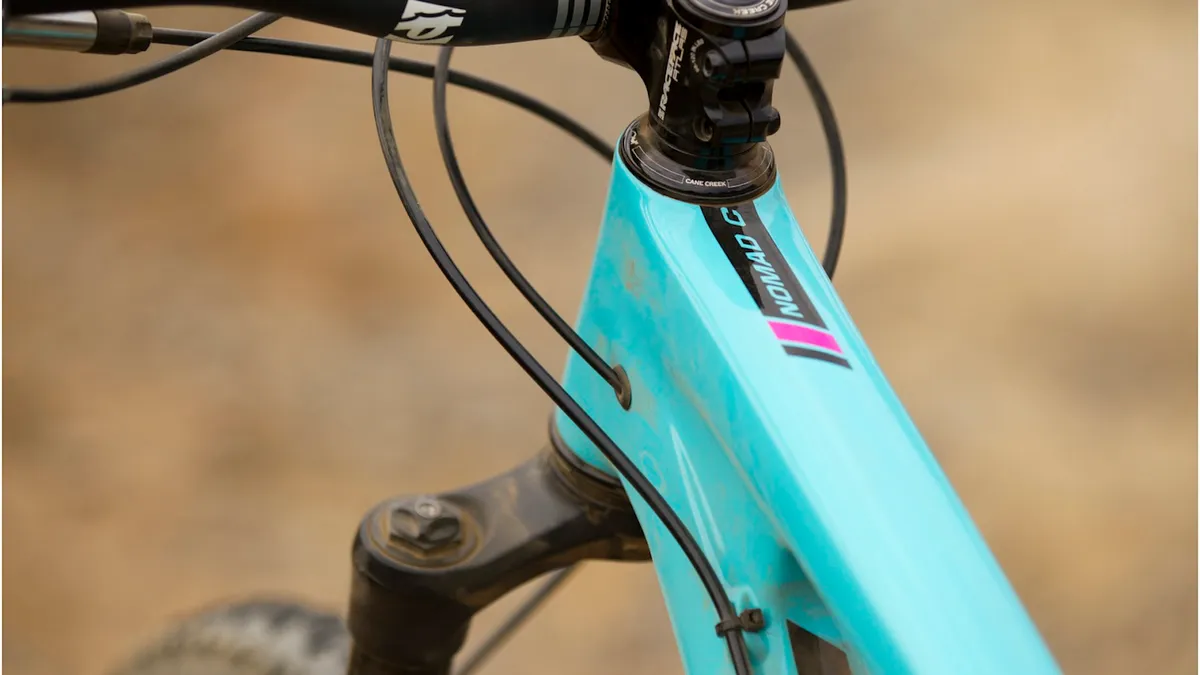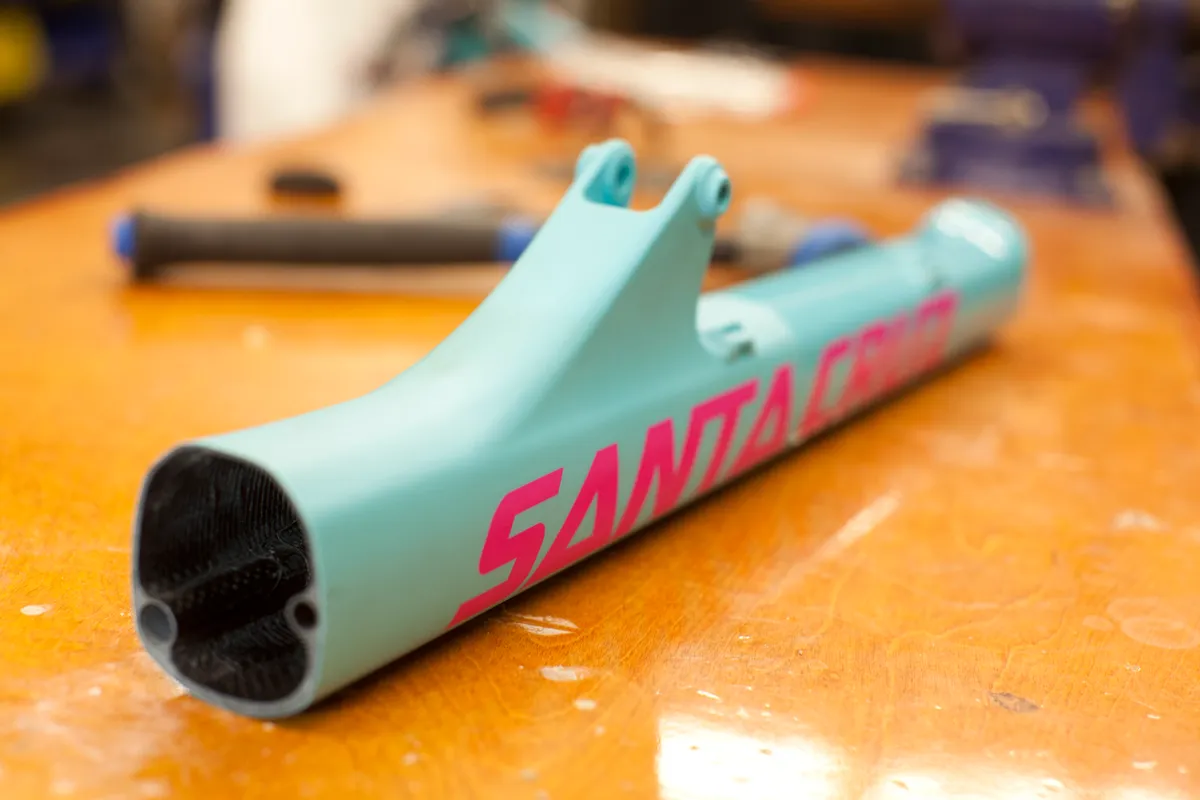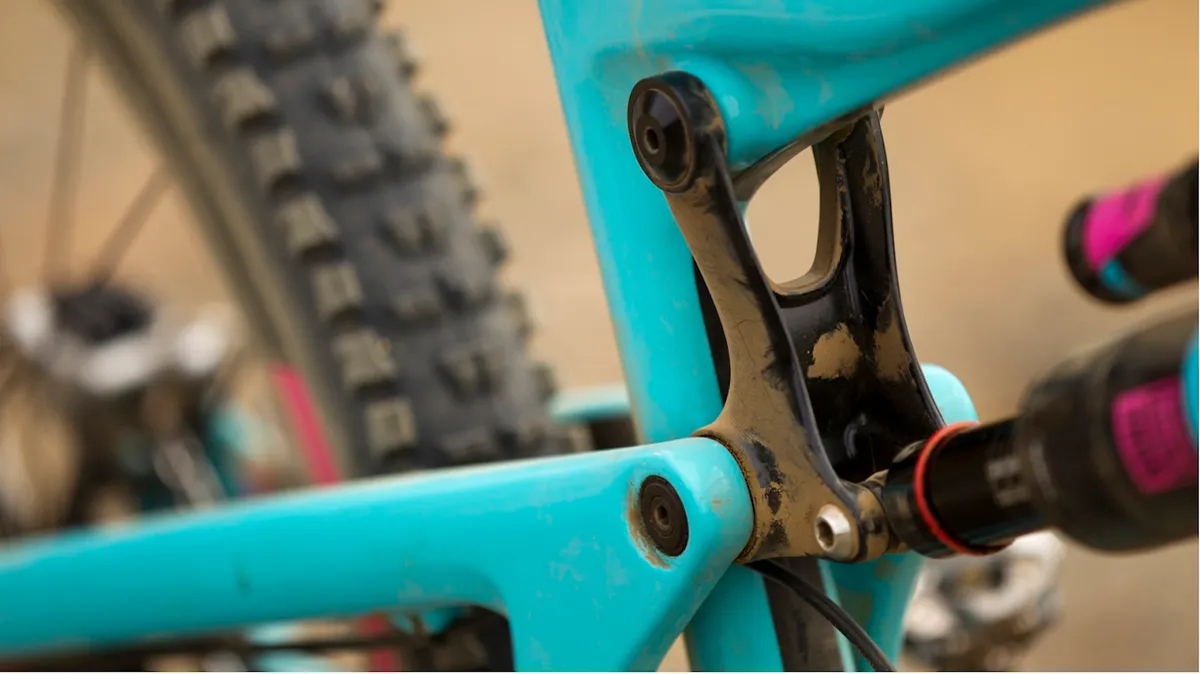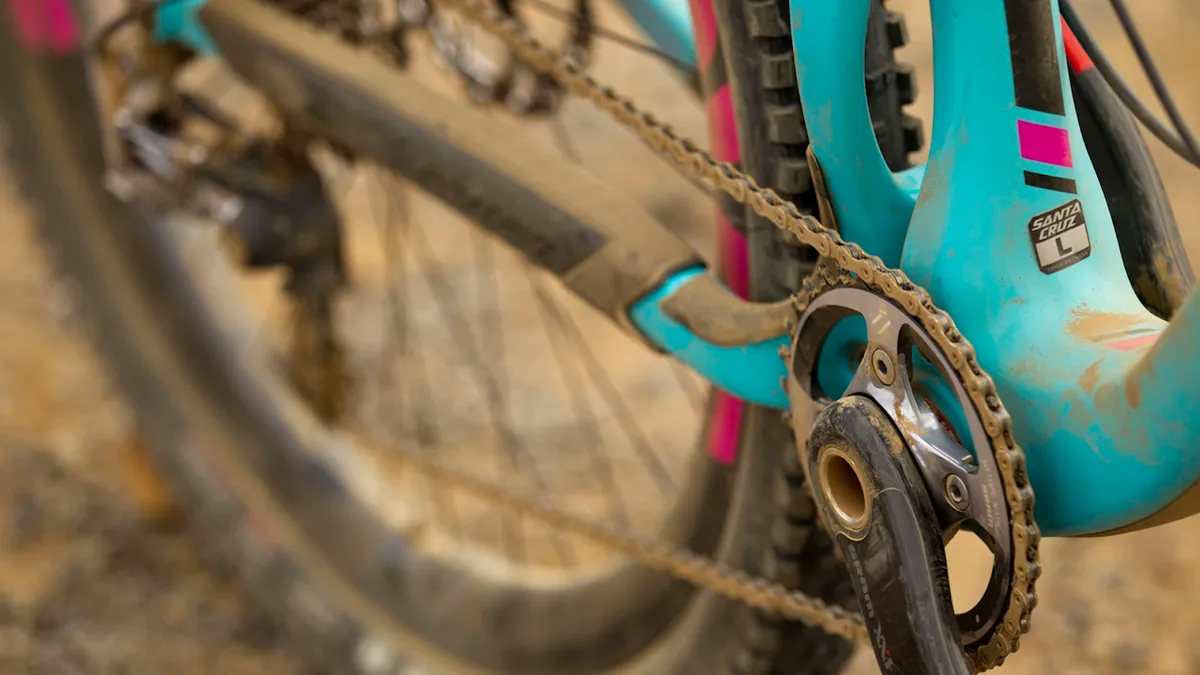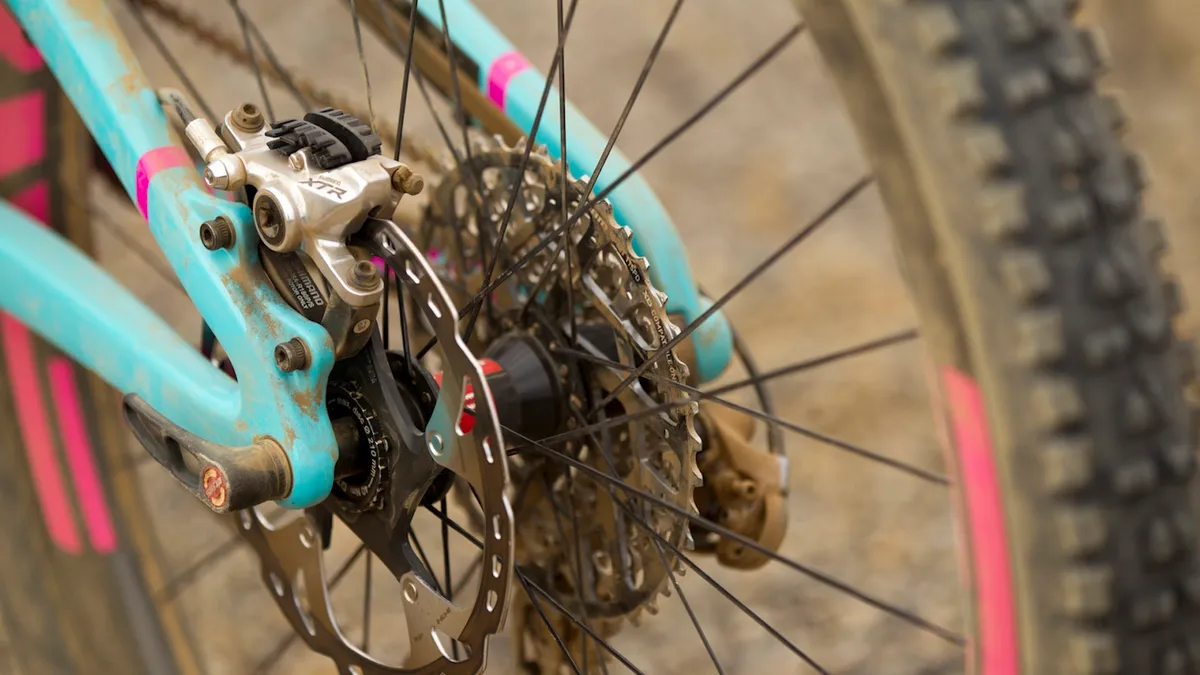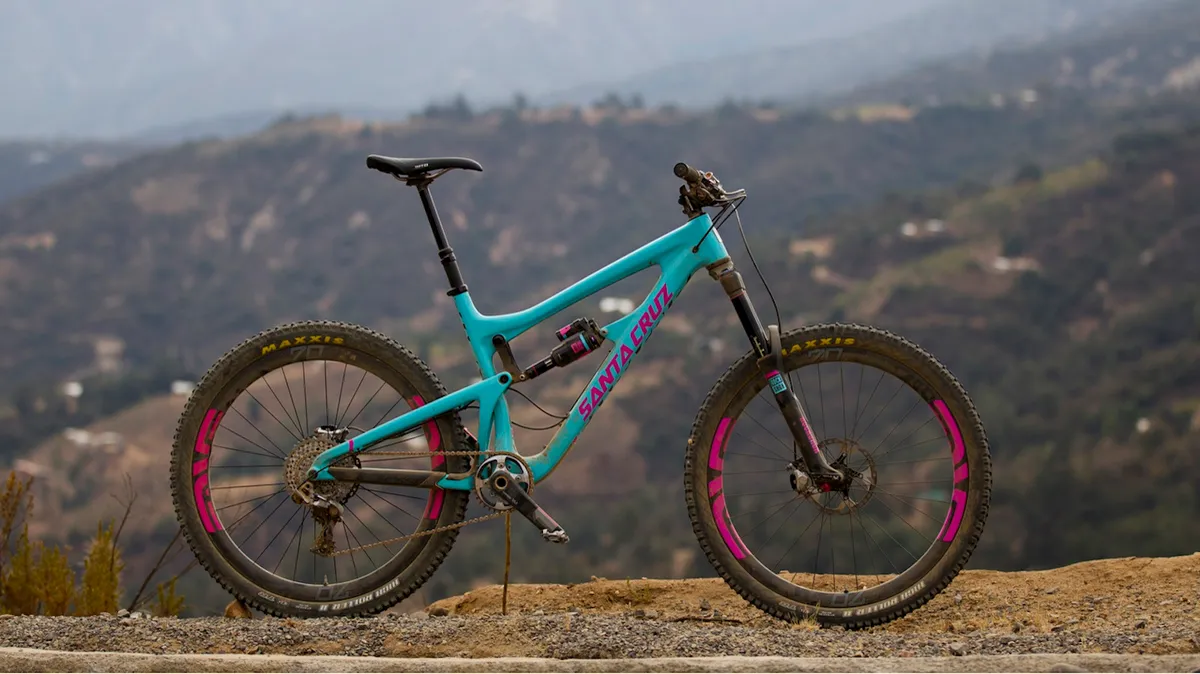First introduced in 2005, the Santa Cruz Nomad was the quintessential all-mountain bike, and it was no easy task for the company to overhaul this iconic model. “We struggled for a really long time with what the bike was going to be,” admitted Santa Cruz director of engineering Joe Graney. Development of the new bike began in early 2011 and proceeded slowly.
Rather than cramming slightly larger wheels into the existing bike and calling it a day, Santa Cruz engineers wanted the next generation of the Nomad to be built with a purpose in mind. The convergence of wide-range single chainring drivetrains with the rise of enduro racing set the stage for the Nomad’s resurrection. The new Nomad is lower, slacker and has more suspension travel than previous versions, making it the most capable incarnation of this aggressive trail bike to date.
- Highs: Outstanding geometry, refined suspension
- Lows: Limited to carbon and high-end build kits for now
Frame and equipment: a new direction for Santa Cruz
The Nomad ushers in several significant frame changes for a company that has historically been reluctant to change frame fitments for the sake of fashion.
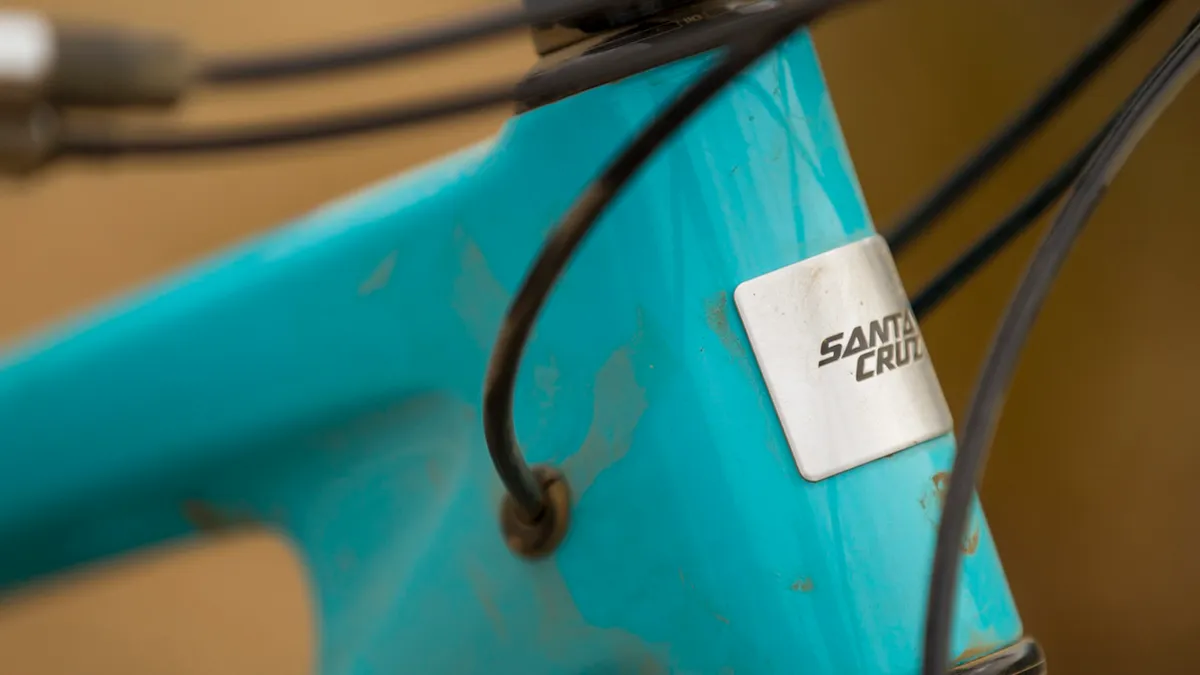
The Nomad is the first Santa Cruz model to offer internal cable routing
Santa Cruz has conceded that there is some merit to internal cable routing. The company is also acutely aware that internal cable routing is frequently the bane of bike mechanics the world over. The solution was to mold continuous carbon tubes into the interior of the frame to make routing the cables through the front triangle a painless procedure, with no fishing for wires and no cursing necessary. This is a welcome addition, as one of our few gripes with the Bronson was the poor cable routing around the bike’s head tube.
Santa Cruz also increased the frame’s seat tube diameter from 30.9 to 31.6mm to allow the use of the 150mm travel RockShox Reverb dropper seatpost, as the 30.9mm version does not offer enough volume for this longer travel option.
In keeping with the enduro-focused design, the Nomad is only compatible with single chainring drivetrains. Designing the Nomad without regard to front derailleur placement allowed the lower link to be much shorter and tucked neatly behind the bottom bracket shell. “We felt the compromises that we would have had to make in order to make it work would not have been worth it, as most people don’t run front derailleurs on this type of bike,” said Santa Cruz engineer Nick Anderson.
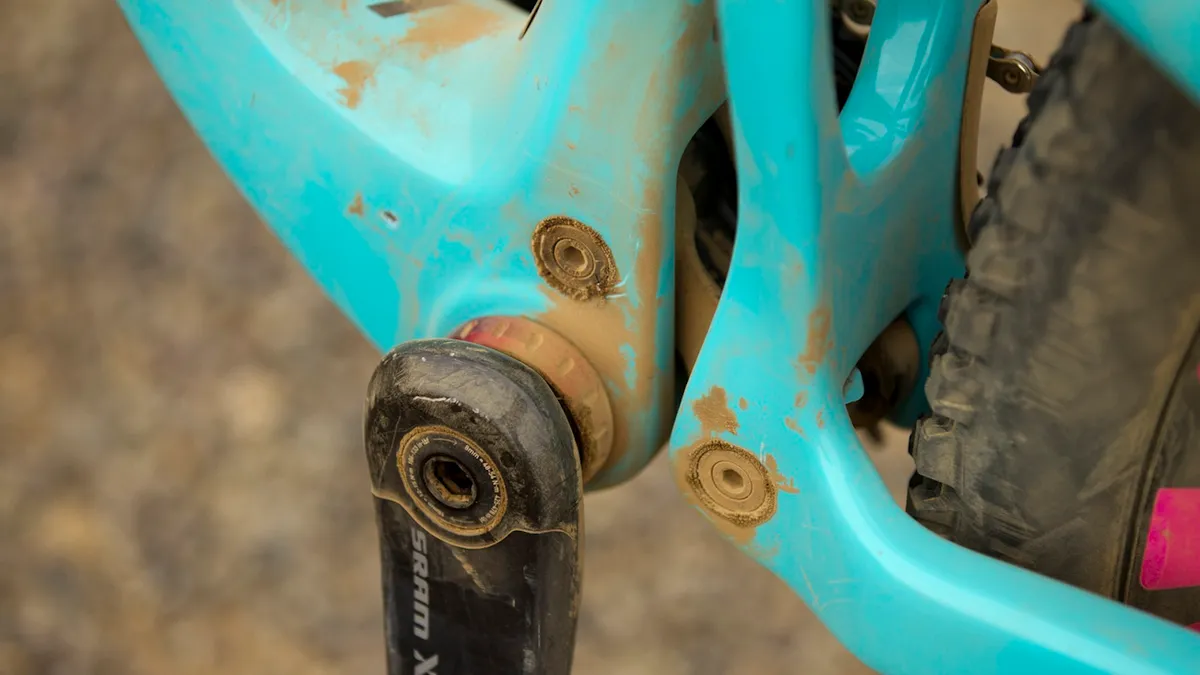
The Nomad's lower link is tucked neatly out of harm's way
The new lower link now has a single recessed grease port that services all four bearings. Up top, Nomad uses a shock linkage similar to the one used on the V10 downhill rig.
Santa Cruz stays the course with the threaded bottom bracket shell – and we're wholeheartedly thankful – and sticks with an IS rear brake mount, rather than a post-mount, because many riders end up using an adaptor for their preferred rotor size anyway, negating any weight savings.
Our test bike featured a no-expense-spared built kit consisting of SRAM’s XX1 group, a RockShox Pike fork and Monarch Plus shock, Shimano XTR Trail brakes and the recently-released Enve M70 series wheels. The result of all this top-end kit was a test bike that weighed in at 27.1lb/12.27kg.
The frame with Monarch Plus shock retails for US$2,999/£2,799. Complete builds with a SRAM X01 drivetrain start at US$6,599/£5,699. The XX1-equiped bike we tested was specced with Enve’s new M70 wheels and will set buyers back US$9,744.
For a US$251 upcharge riders can opt for the RockShox Vivid air. This is not so much an upgrade, as it is an option for riders looking for a more gravity-tuned ride.
While Santa Cruz rolled out the Bronson and 5010 in carbon and alloy versions, and even developed more affordable single-pivot counterparts with matching geometry for budget-minded buyers, the carbon Nomad stands alone.
Ride and handling: balanced and burlyb<!-- /* Font Definitions */ @font-face {font-family:"MS 明朝"; mso-font-charset:78; mso-generic-font-family:auto; mso-font-pitch:variable; mso-font-signature:1 134676480 16 0 131072 0;} @font-face {font-family:"Cambria Math"; panose-1:2 4 5 3 5 4 6 3 2 4; mso-font-charset:0; mso-generic-font-family:auto; mso-font-pitch:variable; mso-font-signature:-536870145 1107305727 0 0 415 0;} @font-face {font-family:Cambria; panose-1:2 4 5 3 5 4 6 3 2 4; mso-font-charset:0; mso-generic-font-family:auto; mso-font-pitch:variable; mso-font-signature:-536870145 1073743103 0 0 415 0;} /* Style Definitions */ p.MsoNormal, li.MsoNormal, div.MsoNormal {mso-style-unhide:no; mso-style-qformat:yes; mso-style-parent:""; margin:0in; margin-bottom:.0001pt; mso-pagination:widow-orphan; font-size:12.0pt; font-family:Cambria; mso-ascii-font-family:Cambria; mso-ascii-theme-font:minor-latin; mso-fareast-font-family:"MS 明朝"; mso-fareast-theme-font:minor-fareast; mso-hansi-font-family:Cambria; mso-hansi-theme-font:minor-latin; mso-bidi-font-family:"Times New Roman"; mso-bidi-theme-font:minor-bidi;} .MsoChpDefault {mso-style-type:export-only; mso-default-props:yes; font-family:Cambria; mso-ascii-font-family:Cambria; mso-ascii-theme-font:minor-latin; mso-fareast-font-family:"MS 明朝"; mso-fareast-theme-font:minor-fareast; mso-hansi-font-family:Cambria; mso-hansi-theme-font:minor-latin; mso-bidi-font-family:"Times New Roman"; mso-bidi-theme-font:minor-bidi;} @page WordSection1 {size:8.5in 11.0in; margin:1.0in 1.25in 1.0in 1.25in; mso-header-margin:.5in; mso-footer-margin:.5in; mso-paper-source:0;} div.WordSection1 {page:WordSection1;} blanad
According to Santa Cruz, one of the overarching goals of the Nomad redesign was to improve the geometry and fit over the now-retired 26in version. The chainstay length shrinks by 9mm to 433mm thanks in part to the 1x-specific frame design. The head angle slackens from 67 degrees to a gravity-tuned 65 degrees, while the seat tube angle steepens from 71.5 to 74.3 degrees to provide a much better stance while climbing. The bottom bracket drops from 14in/356mm to a carvy 13.4in/340mm. Santa Cruz also updated the frame sizing; the reach increases by 20mm across all four frame sizes, giving the rider a bit more room in the cockpit.
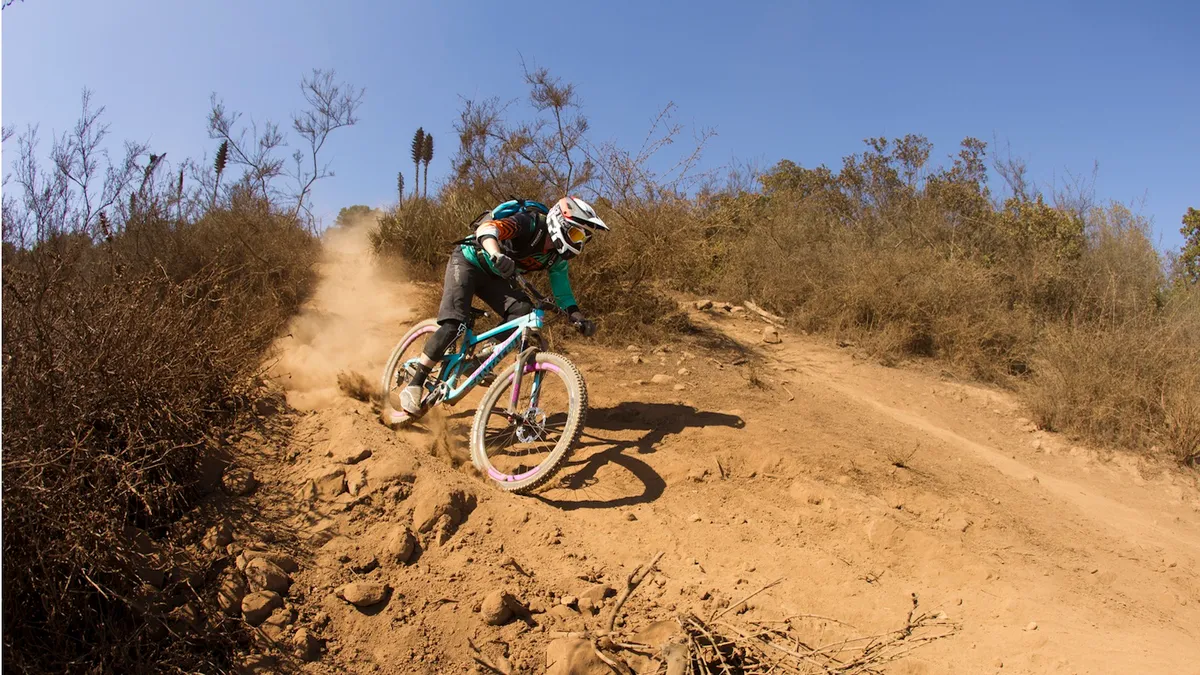
The Nomad is a unflappable descender that can also climb without complaint
The sum of these changes becomes clear once the treads bite into the dirt. The Nomad comes to life during high-speed descents. The stiff chassis tracked predictably and the even rider position, low bottom bracket and short rear end result in a bike that requires very little effort handle and retains a self-assured demeanor through rough and tumble terrain.
Despite having a head tube angle that approaches gravity bike territory, the Nomad is surprisingly surefooted during low speed technical sections and when climbing – its certainly a better ascender than its predecessor – particularly with the compression knob on the Monarch Plus switched to the middle position.
We did back to back tests with RockShox Monarch Plus and Vivid Air. While both are capable dampers, the difference between the two units is significant.
The ride is substantially more muted through rock gardens and over braking bumps with the Vivid Air. The shock effortlessly soaks up high frequency trail chatter and big hits, while delivering better traction.
The Monarch Plus is no slouch, either, though the shock is tuned for better all-around performance at the expense of big hit absorption.
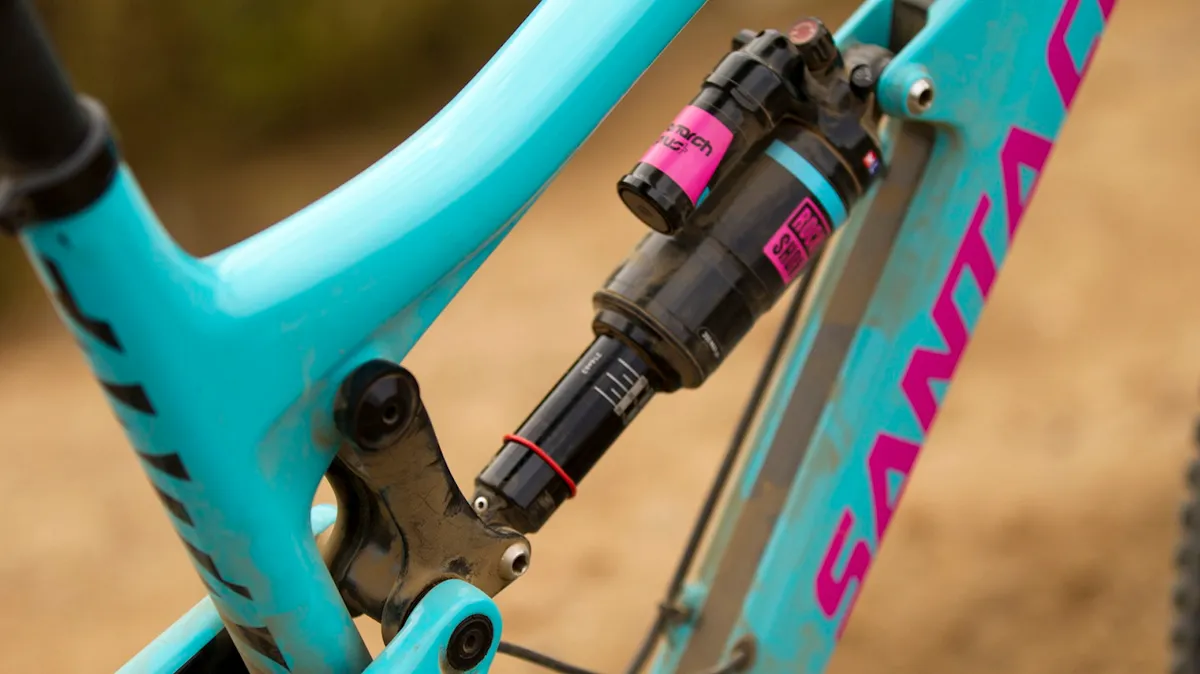
The RockShox Monarch Plus (shown) makes the Nomad a well-rounded machine, while the Vivid Air gives the Nomad a mini downhill bike feel
Riders considering purchasing the Nomad for use an aggressive trail bike would be better served by the lighter and more versatile Monarch Plus. Those wishing to use the Nomad as mini-DH rig or park bike should gravitate towards the Vivid Air.
If we had our way, we’d opt for the best of both worlds: a Vivid Air with a climb switch. (Are you listening, SRAM?)
Verdict
Slow and steady may not always win the race, but it looks to be a good way to redesign a storied all-mountain bike. The new Nomad is a category-leading enduro race bike that outperforms its predecessors in every way. The refined geometry does more to improve the bike than the addition of 650b wheels, though both play their part. The clever internal routing, 1x-specific VPP linkage, and the longer frame reach all work to the benefit of the rider. Time will tell if these feature are incorporated into the rest of the Santa Cruz line.
If there’s a downside to the Nomad, it’s the price of admission. The fact that there’s no alloy option, nor a single-pivot doppelgänger, coupled with the current lack of mid-range 1x drivetrains from SRAM and Shimano result in a very limited number of build kits, all of which are expensive, at least for now.
